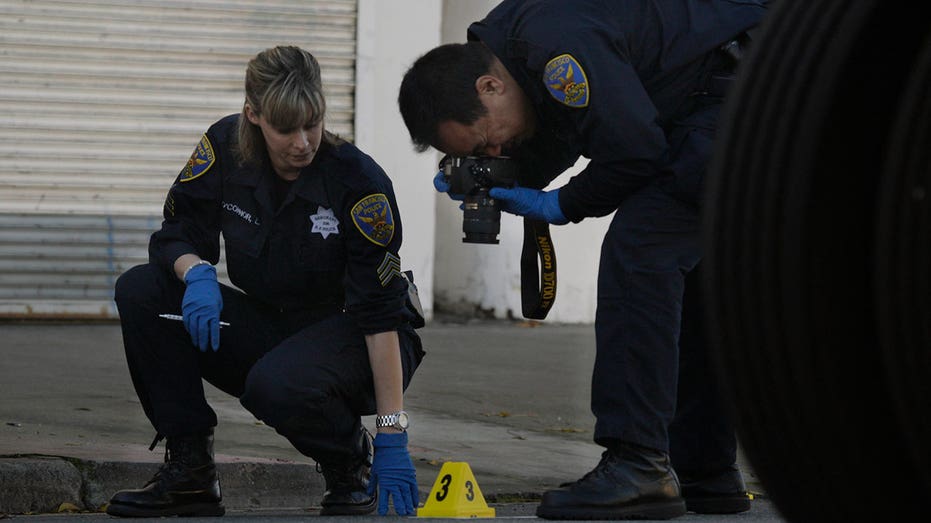The role of forensic science in solving true crime cases
Forensic science is often depicted in crime shows and movies, but how it plays a role in solving true crime cases can be very different.

You’ve seen it countless times.
Police scope out the scene of a crime and find a piece of evidence: a strand of hair, a blood sample, a bullet casing. It goes to the lab, and after forensic scientists analyze it, the evidence helps land the perpetrator in jail.
Or, that is how forensic science is depicted in "CSI" or "Law & Order." But in reality, forensic science is often far more complicated.
HOW EXACT IS FORENSIC SCIENCE?
What exactly is forensic science, and how does it work in real criminal investigations? Read on to learn more about the role that forensic science plays in solving true crime cases.
Forensic science, also known as criminalistics, is the use of scientific methods to assist professionals in the criminal justice system. It makes use of many scientific disciplines, such as chemistry, physics and biology, to determine what exactly happened at the scene of a crime, be it homicide, sexual assault or robbery.
It begins with a thorough documentation of the crime scene. The area is photographed, bullet holes are measured to determine the trajectory of shots and possible witnesses are interviewed.
Physical evidence, which could include fingerprints, blood or DNA samples, and possible murder weapons are collected. These items are then sent to a laboratory for analysis.
Victimology, or studying the victim to gain insight into the perpetrator’s behavior, is also an important component of forensic science.
CRIMINAL PROFILING: THE TECHNIQUES USED BY POLICE TO CATCH DANGEROUS OFFENDERS
For Mary Ellen O’Toole, Ph.D., director of the Forensic Science Program at George Mason University and a former FBI special agent with the Behavioral Analysis Unit, victimology begins by considering a host of questions.
"Why was that victim selected and did the offender know that victim? What was the level of risk to the victim? Was this somebody that was victimized in their own home in a safe neighborhood?" she told Fox News Digital during a phone call.
Finding the answers to these questions can help shed light on the perpetrator’s behavior and possible motive. O’Toole said that at this point in the investigation, "I'm still looking at the whole case, but I'm already forming some tentative opinions."
When it comes to conducting an investigation, doing things in the right order is essential.
Investigators have to make important decisions about things as simple as how to move through the scene: Do you enter into the bathroom first, or the bedroom? When one misstep can disturb or ruin potential evidence, being careful is critical.
This is especially important when items are examined in the lab. Some tests can destroy important evidence on the item.
"Think about a firearm," Peter Valentin, Ph.D., the chairman of the Forensic Science Department at the University of New Haven and a former detective in the Major Crime Squad for the Connecticut State Police told Fox News Digital during a phone call. "You might want to know if the firearm functions. But if you send it to get an operability test done first, and you don’t realize until afterwards that there was biological evidence on that firearm, it’s quite likely that that evidence will be gone. It will be destroyed or altered from the way it originally appeared."
IDAHO MURDERS TIMELINE: WHAT WE KNOW ABOUT THE SLAYINGS OF FOUR STUDENTS
That is why nondestructive tests should be done as early in the process as possible.
As test results come in and more information becomes available, investigators are able to build a fuller picture of what happened at the scene of the crime. They may have hypotheses of what happened based on their first look at the scene, but sometimes, looks can be deceiving.
A death that appeared to be the result of natural causes could be a murder, or vice versa. That is why forensic science can provide objective data that helps them formulate their idea of how the crime occurred.
Forensic science helps investigators take evidence and then establish an association "between someone suspected of committing a crime and the scene of the crime or victim," according to the Bureau of Justice Statistics.
When Valentin explains this concept to his students, he focuses on three things. "Forensics is about connecting people together, connecting people to objects, and then connecting people and objects to places," he said.
FOR MORE TRUE CRIME, FOLLOW FOX NEWS TRUE CRIME ON X
For example, he points to the ongoing case of the Idaho college murder case. The prime suspect, Bryan Kohberger, was found after investigators discovered matching DNA on the sheaf of the knife used to slay four students.
Instead of having to go through thousands of hours of surveillance footage, investigators were able to narrow their search for a specific vehicle and a specific cell phone serial number. This is how they determined that Kohberger was in the vicinity of the crime scene during the time of the murders.
"It’s a great example of how you can use forensic information to focus your investigation," said Valentin. "You go from having a mountain of data to having a suspect from out of state, and his car is in the area during the period of the crime. That's enough evidence to perhaps convince a jury."
One way that forensic science differs from how it is portrayed on television is the length of time it takes to get results. In fiction, an analysis only takes a few hours. In reality, it can take days or weeks.
SIGN UP TO GET TRUE CRIME NEWSLETTER
In the case of Gary Leon Ridgway, the "Green River Killer," one of the most prolific serial killers in U.S. history, it took more than a decade before a single piece of evidence led to his capture.
Ridgway committed numerous murders from the 1980s to the early 2000s. Investigators considered him a suspect and even collected a saliva sample from 1987, but there was not enough evidence to convict him.
DNA profiling was still in its infancy in the 1980s. However, the technology rapidly developed in the ensuing decades, and in the early 2000s, a DNA test linked Ridgway’s saliva sample to DNA collected from murder victims.
"It may take years, but that's what forensic science is all about," said O’Toole.



